Modernity’s Effect on Healthcare Architecture in the 20th Century: Dignity and Disaster
By Hussain Varawalla
What is Modernity?
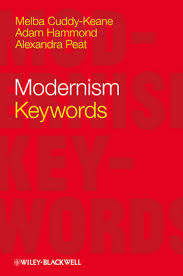
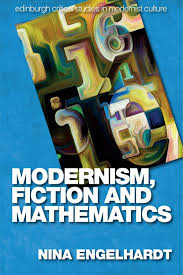 In our postmodern and deconstructivist world of today, there have been many answers offered to this question. The majority of them have been negative. It has been said that Modernity marked the death of God, as trumpeted by Friedrich Nietzsche, the German philosopher. It is said to have made life into just another commodity, it has been credited (or more correctly, debited) with the leveling of qualitative distinctions, the brutalities of capitalism with it’s emphasis on quantity, the loss of value and meaning in the lives of most people, existential dread – all of which have been summarized in the phrase made famous by Max Weber: “the disenchantment of the world.”
In our postmodern and deconstructivist world of today, there have been many answers offered to this question. The majority of them have been negative. It has been said that Modernity marked the death of God, as trumpeted by Friedrich Nietzsche, the German philosopher. It is said to have made life into just another commodity, it has been credited (or more correctly, debited) with the leveling of qualitative distinctions, the brutalities of capitalism with it’s emphasis on quantity, the loss of value and meaning in the lives of most people, existential dread – all of which have been summarized in the phrase made famous by Max Weber: “the disenchantment of the world.”
No doubt there is some truth in all these claims. But modernity has some very positive aspects as well; it has given us the liberal democracies, the ideals of liberty, equality and fraternity, regardless of race, class, creed or gender; modern science; the end of slavery and the rise of feminism and the concept of universal rights for all human beings. Surely these achievements are more noble
that the mere “disenchantment of the world.”
What we need, then, is a specific description or definition of modernity that allows for all of the above factors, both good and bad.
Different writers on the subject, from Max Weber to Jurgen Habermas, have suggested a specific
definition for modernity as the “differentiation of the cultural value spheres”, which specifically
means the differentiation of the respective fields of art, morals and science. Where previously
these spheres tended to be fused, modernity differentiated them and let them develop individually
at their own pace and with their own dignity.
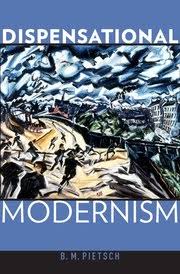
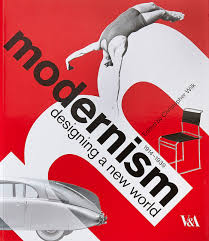
What do we mean when we say that previously these spheres of human activity were fused?
Surely they were always different fields of endeavor? Pre-modern cultures certainly possessed arts, morals and science. The point is that these spheres were ‘undifferentiated.” For example, in the Middle Ages, Galileo could not freely look at the heavens through his telescope and report the results as the fields of arts, morals and science were all fused under the Church, and thus the moral teaching of the Church defined the boundaries of science – the Church’s official line was that the sun went around the earth and that was the end of the discussion.
However, with modernity’s differentiation of the value spheres, a Galileo could state his case without fear of being charged with heresy or treason. Artists could paint non-religious or even sacrilegious themes without fear of punishment. And moral theory was free to pursue any line of inquiry it pleased, whether it was OK by the Bible or not.
For all these reasons and more, the differentiations of modernity have been referred to as the dignity of modernity, for they enabled, for example, the advances in science and technology, individual freedoms guaranteed by the constitutions of liberal democracies and the vast palette of styles in the fields of art and architecture.
The bad news, however, which modernity brought along with it, was that these value spheres did not just peacefully separate, they sometimes flew apart completely. The desirable differentiations overflowed into actual disassociation, fragmentation, and alienation. The growth became a cancer and dignity became disaster. This disassociation allowed a powerful and aggressive science to
invade and dominate the other spheres. Science became scientism – scientific materialism and scientific imperialism – that soon became the “official” world-view of modernity. Science denied any validity to qualitative spheres such as religion, which made claims unverifiable by science. Classic variations on this theme have been given by Sigmund Freud, Karl Marx and Bertrand Russell, the champions of this world-view.
Will and Ariel Durant’s description of modernity as the “Age of Reason and Revolution” is as good a summary as any.
Modernity, Industrialization and Architecture: The Dignity
At the beginning of the 19th century, in prewar Germany, the forces for reform used industrialization and mechanization to turn out well-designed, high-quality products, as well as to achieve a new style in architecture, more appropriate to their Brave New World. The combined economic and artistic strivings of industrialists, artists and craftspeople came together in 1907 in the Deutsche Werkbund (German artwork union). The Werkbund’s program setting exhibition, held in Cologne only a few weeks before the outbreak of the First World War, offered an overview of the various architectural currents of the time. Hermann Muthesius, an important architect, demanded a thoroughgoing move to industrial production, even of products that were traditionally handcrafted, and in this he included architecture. His views triumphed over those who held out for a strongly individualized and more craft-oriented direction. Scientific materialism prevailed over Romanticism, the first strong reaction to the disaster component of modernity, which advocated a return to a pristine and “fused” past.
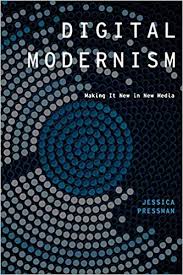
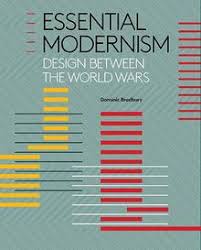
The outstanding architectural event of the Werkbund exhibition in Cologne was the Glass Pavilion by Bruno Taut. A year earlier, in 1913, taut had produced a monument to iron in the steel industry
for the building exhibition in Leipzig, which served as a model by means of its use of new forms and materials. Instead of historical ornamentation, the monument showed an exemplary respect for its materials. Even from the outside it was a textbook example of building in iron.
It was these same principles that gave its exceptional quality to a factory for making shoe-lasts, the Fagus factory designed by Adolf Meyer and Walter Gropius (1911-1913). It is regarded as one of the founding buildings of the 20th century Modernist architecture.
The models for these new factory buildings with their functional, technical language of forms were American silos and industrial buildings, whose persuasive functionality was now increasingly recognized to have an aesthetic dimension. Also influential in Europe were the factory buildings with concrete skeletons that Albert Kahn and the engineer Ernest Ransome built for the industrialist Henry ford’s thrusting new automobile works in Detroit. Henry Ford’s recipe for success was signal in its modernity. Mass-produced parts, a rational work flow, the increased division of labor and the resultant low production costs all contributed to making Henry Ford one of the most successful car makers of his day.
Kahn’s buildings reflect this sternly economic point of view with their total renunciation of display, being soberly cubic in form and without any superfluous decoration. The production sheds with their conveyor belts were rationally designed, laid out all on one level, and were notable for their bright interiors, full of natural light coming in through large windows set into the supporting
concrete skeleton.
This contribution of architecture towards the development of the economy and improving working conditions for the labor force through the application of scientific principles is a part of the dignity brought by modernism, in its avatar of scientific materialism, to society at large. We go on to see how modernity establishes itself as an architectural style underpinned by modernity as a
philosophy to live your life by.
The International Style: A Prelude to the Globalization of Modern Architecture
The First World War was the defining experience of an whole era. Modern weapons, such as tanks and aircraft, had been brought to a high degree of technical perfection, and were employed for the first time. As a result of the war, the generalized deprivation that had struck whole areas of the population was a challenge to artists and writers, as well as to politicians. At this time, artistic and
political programs went hand in hand with the aim of changing the face of the world and the ways of being that it offered.
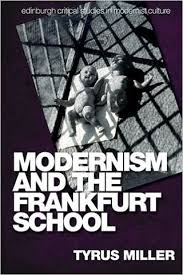
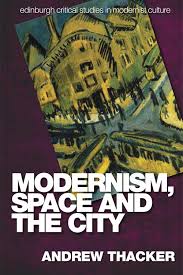 In architecture too, there was a thoroughgoing drive to develop functional new ways of building and to use new building materials: glass, concrete and steel. The new more rational and economical building methods were not just an expression of the spirit of the times. They had a definite social component, especially when applied to the housing developments that were carried
In architecture too, there was a thoroughgoing drive to develop functional new ways of building and to use new building materials: glass, concrete and steel. The new more rational and economical building methods were not just an expression of the spirit of the times. They had a definite social component, especially when applied to the housing developments that were carried
out with a great deal of urgency to address the problem of homelessness. From1920 to 1930,
following the disaster of the First World War, an undreamed of period of revolt and euphoria broke out. A new, more relevant architecture, which was backed by social purpose, joined the
cityscapes.
In 1927 the Deutscher Werkbund organized a building exhibition in the Weissenhof housing development in Stuttgart, which highlighted what was newest in the architecture of the day. Practitioners of Modernism such as Le Corbusier and Jacobus Johannes Pieter Oud and German architects such as Scharoun, Gropius, Behrens and Mies van der Rohe were given a forum in
which to present the new building styles and their rationale systematically to the public. In the few years since the First World War a completely new architecture had developed and in the Stuttgart Weissenhof estate it became clearly evident for the first time that this was not a specific style with a regional stamp, but a worldwide development.
Faced by the rapid worldwide triumph of the new building style exemplified by the Weissenhof estate, it is not surprising that it was christened the “International Style” by the architectural critic Henry-Russell Hitchcock on the occasion of an exhibition of recent Modernist architecture in the Museum of Modern Art in New York in 1932. The International Style conquered almost the whole
world in the years before the Second World War. With its cubic units in cement, steel and glass it unified the visual aspect of cities, and dominated almost the whole of architectural development right into the 1960s.
After the Second World War, shattered countries had to be rebuilt, and the International Style, which carried no undesirable political overtones, came into its own, especially in America. Reinforced concrete and glassy facades became the hallmarks of a new era. From South America to Southeast Asia, architecture took on a unified style, which put its stamp to a greater or lesser degree on all cities, sometimes pushing regional architectural forms into the background, or causing them to disappear from the profile of the city altogether.
This was the beginning of the disassociation, worldwide, with these concrete, steel and glass towers that were coming to symbolize to society at large the gross materialism of the driving ethos, the “disenchantment with the world” with relation to the prevalent architecture. The huge utopian modernist housing projects alienated the very inhabitants they were designed to house. These planned utopias turned into wastelands of graffiti, vandalism and neglect. Thus in the late 1960s and early 1970s some of them were dynamited. In fact, an architect named Charles Jencks, in a public lecture, proclaimed that on July 15, 1972, at 3:32 PM, modern architecture died, as a huge housing project in the city of St. Louis was blown to smithereens.
The utopian, progressive elements of architectural modernism were increasingly criticized by architects who felt the need to integrate painting, sculpture and graphics with architecture, a tradition that the Modernist architects had rejected. Modernists, in idealizing the well-engineered forms of transatlantic steamships, American grain elevators and Cubist paintings had ended up creating buildings that symbolized a Brave New World of science and technology to the exclusion of the other two differentiated value spheres, art and ethics. Their buildings had come to symbolize the power of a technocratic elite, an invading scientific materialism (or “Truth’) establishing its hegemony over ‘Beauty’ and ‘Goodness’, so that art and ethics could not pursue their individual aspirations without dominance or violence from science in the built form of our world today.
This was the disaster.
Healthcare Architecture in the 20th Century: The Dignity and the Disaster…
Le Corbusier, a famous Modernist architect, talked of a house as a “machine for living in”.
If Le Corbusier had been a healthcare architect, maybe he would have talked about designing hospitals as “machines for healing in”.
We are aware of the complexity of the functional needs of a modern hospital, and the specialized knowledge needed by its designer with respect to its engineering services and the needs of the medical equipment it houses. So we can see how a hospital, especially one being built in the new millennium, could well be considered to be “a machine for healing in”.

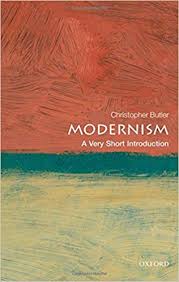
In fact, many (if not most) of the hospitals built in India during the latter part of the last century seem to have been designed to provide a roof over the increasingly complex medical procedures being performed within, with their architects being little more than “doctor’s draftsmen”, translators of medical and technological requirements into built form. Grim and cheerless buildings that cannot
be dignified with the word “architecture”. The concept that what works well will of necessity look well has been the lame excuse for all the sterile architecture, furniture and implements of the twenties and thirties. The international style let us down rather badly in terms of human value. “Should I design it to be functional,” the students say, “or to be aesthetically pleasing?” This is the most often heard, the most understandable, and yet the most mixed-up question in design today. “Do you want it to look good or to work?” Barricades are erected between what are really just two of the many aspects of function.
In the developed West, the health landscape is littered with the buildings of the 1960s and 1970s – eight to ten floors of narrow inpatient units stacked vertically on a podium accommodating diagnostic, therapeutic and interventional services. (While this building form was, in part, a response to the physical crowding of urbanization, it was also, in part, a phallocentric need of the
technocratic elite who made such decisions. Putting a “man” on the moon was the logical conclusion to this need.)
The inherent problems of vertical organization, and particularly of a tower block of wards, is that of a limited envelope with no means of lateral expansion. The considerable portion of each floor taken up by lifts, stairs and service shafts, is not only inherently wasteful and expensive; it also makes the plan form more rigid, and inhibits subsequent alteration. Growth of a vertically
organized hospital tends to take the form of clusters of smaller blocks at its base, with increasingly difficult service and circulation routes.
The advantage frequently claimed for tall hospitals is that they occupy less land. This is only valid for inner urban hospitals, such as the (moderately) tall Chelsea and Westminster Hospital, London, where the floor area is similar at all levels. The commonest type of tall hospital, especially in the USA, is the “tower on podium” form, popularized by Gordon Friesen with his mineworkers hospitals, and based on a production engineering principle of supplies fed the wards from a basement service center. The podium of these hospitals usually spreads to occupy a site similar to those of compact low-rise hospitals. The flexibility limitations of such hospitals become more evident as the proportion of the total built volume comprising wards is tending to diminish.
The tower and podium form is common in other building types, notably – and for similar reasons – hotels. Lever House in New York had a great influence, and not only on other office buildings. Although the earliest Friesen hospitals pre-date Lever House, the prevalence of hospitals of this form in the USA from the 1950’s onwards may be partly attributable to this much admired “classic”
of modernist architecture.
It is arguable, however, that hospitals, with their functional complexity and unknown ultimate form, are more suitable for the alternate organic stream of modern architecture, typified by Frank Lloyd Wright, Aalvar Aalto and Hans Scharoun, than for the purist geometry typical of Mies van der Rohe and his followers. It may be significant that Aalto’s Paimio sanatorium is the only hospital among
the undisputed masterpieces of modern architecture

Hospitals designed during this period, the latter part of the 20th century, were, by and large, physical manifestations of functional health planning diagrams, with little or no regard to an appropriate architecture or to site and context issues. Sarita Chand, a principal in the Australian design firm Bligh Voller Neild says: “The reasons behind this sorry state of affairs are not hard to diagnose. Even with the best design intentions in the world, architects get overwhelmed by the sheer complexity and “hard” functional issues of a hospital brief…But these issues, daunting in themselves, are not the only reasons for the unacceptable state of much hospital architecture. The real issue, in my opinion, is that little value is attached to the architectural quality of the hospital – to amenities such as natural light, views, way finding devices and public spaces. Instead, processdriven managers, under the guise of cost-rationalization, drive their obsession with statistics – area-per-bed, room areas, circulation percentages and so on – to such a level that they become the main criteria for the assessment of hospital design.”
The inroads of scientific materialism into its sister fields of art and ethics! An almost incestuous rape, the humiliation and abuse of the marginalized! Our hospitals and cities became onedimensional flatlands of the Gospel according to science, or “Truth”, lacking the emotional and spiritual depth of art and ethics, or “Beauty” and “Goodness”. Lewis Mumford so memorably called this the disqualified universe: a world lacking in quality and meaning, governed not by spirit or consciousness or purpose or meaning, but by the teachings of the prophet Werner Heisenberg, ruled by blind chance and systems necessity, with the blind leading the blind, and one-eyed (read:
“one-dimensional”) men as kings.
This then was the disaster. What of the dignity?
Modernity, with respect to health, provided with the field of endeavor of modern medicine, as we know it today. Advances in science and technology enabled building construction methods and materials and building services such as plumbing, electrical systems and air-conditioning and airfiltration systems without which our contemporary hospitals would be crippled. Medical equipment has reached a mind-boggling degree of sophistication, both in the fields of diagnosis and treatment. The “Black Death” of the premodern world, plague, has been eradicated, and cures have been found for illnesses such as malaria that previously caused widespread suffering.
All this was made possible by the “differentiation of the value spheres” that we spoke of earlier, enabled by modernity (that is, the events set into motion by the liberal Enlightenment.) This differentiation is the essence of the dignity modernity conferred on our world.
It is this dignity of differentiation that the anti-modernity critics often miss, because they confuse differentiation with disassociation. If differentiation goes too far, the result is disassociation or fragmentation. The process gets out of control, and the various subsystems cannot be easily integrated; they fly apart instead of fitting together, and the result is pathology, repression and
alienation, the ills of our modern world.
Premodern cultures did not have this disaster precisely because they not possess the corresponding dignities either. The cure for the disaster of modernity is to address the disassociation, not to attempt to erase the differentiation, as many narrowly focused postmodern philosophies try to do.
This disassociation, this disease, this developmental pathology – is of profound significance in attempting to understand the ills of the modern world. All of the higher levels of human consciousness and endeavor were scrubbed from the face of the World, being adjudged meaningless and thus marginalized by scientific materialism, leaving dirt and dust, systems and sand, matter and mass, objects and its. A cold, uncaring wind, one-dimensional in its method and calculated in its madness, blew across a flat and faded cityscape, the cityscape that now contains, as tiny specks in its alleys, the faces of you and me.
Pre-modern – Modern – Post-Modern
Modernism: Design In a Nutshell
Healthcare, Ethics, & Postmodernism
0 thoughts on “Modernity’s Effect on Healthcare Architecture in the 20th Century: Dignity and Disaster”